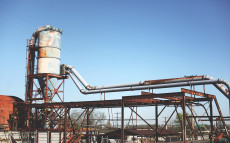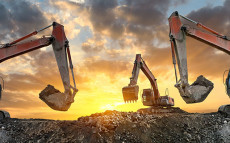- pathfindersAI
- Job Profile
Maintenance and Repair Workers, General
Summary
Maintenance and Repair Workers, General: A Comprehensive Overview
What They Do
Maintenance and Repair Workers, General play a pivotal role in ensuring the functionality, safety, and efficiency of various environments, including residential, commercial, and industrial settings. Their responsibilities span a vast spectrum, from fixing leaky faucets and broken windows to troubleshooting malfunctioning electrical systems and HVAC units. Essentially, they provide indispensable services that maintain the day-to-day operations of buildings and facilities. They act as the backbone of operational efficiency, ensuring that all systems are running smoothly and any disruptions are promptly addressed.
Job Responsibilities
The roles and responsibilities of Maintenance and Repair Workers, General are multifaceted. These professionals are tasked with the repair and maintenance of machinery, plumbing, electrical systems, and structural elements within a facility. This includes, but is not limited to, duties such as diagnosing mechanical issues, performing preventative maintenance, and installing new equipment. Additionally, they may engage in routine inspections to identify potential problems before they become significant issues. The versatility of their job requires them to collaborate with other professionals, maintain organized records of repairs and maintenance, and adhere to safety regulations and guidelines.
Essential Skills
To excel as a Maintenance and Repair Worker, several key skills are essential. First and foremost is technical expertise across multiple domains, such as carpentry, plumbing, and electrical systems. Problem-solving abilities are crucial, as workers must often diagnose and resolve issues efficiently. Physical dexterity and stamina are necessary, given the hands-on nature of the job. Strong communication skills facilitate effective collaboration with colleagues and clear reporting of issues and solutions. Additionally, time management skills are imperative to prioritize and execute multiple tasks within tight deadlines.
Educational Pathways
Aspiring Maintenance and Repair Workers typically follow varied educational trajectories. Many start their careers with a high school diploma or GED, though some positions may prefer candidates with postsecondary training in specific trade schools or community colleges. Vocational courses in areas like electrical repairs, HVAC systems, and plumbing provide a strong foundation. Furthermore, apprenticeship programs offer invaluable hands-on experience under the mentorship of seasoned professionals. Continuing education and specialized certifications in areas like OSHA safety standards or specific systems (e.g., HVAC) can enhance job prospects and career advancement.
Career Prospects
The career outlook for Maintenance and Repair Workers, General is promising. According to recent labor statistics, the demand for skilled maintenance workers is expected to grow steadily. This growth is attributed to the continual need for maintenance and repair of aging infrastructure and the increasing complexity of modern facilities. Entry-level workers can expect to start at a competitive hourly wage, with opportunities for overtime. With experience and additional training, individuals may advance to supervisory roles or specialize in high-demand areas, significantly boosting their earning potential. The profession provides not only job stability but also a rewarding career path for those with the right skills and dedication.
Conclusion
In conclusion, Maintenance and Repair Workers, General are vital contributors to the smooth operation of various facilities, ensuring functionality, safety, and efficiency. Their wide-ranging responsibilities demand a diverse skillset and continuous learning. Educational pathways offer multiple routes, from high school diplomas to specialized certifications, accommodating a range of backgrounds. The career prospects in this field are robust, offering stability and advancement opportunities. For individuals who enjoy hands-on work, problem-solving, and a dynamic work environment, a career as a Maintenance and Repair Worker can be both fulfilling and lucrative.
Video
Compensation
| State | Median Salary | Median Hourly | Positions |
|---|---|---|---|
| AL | 38,130 | 18.33 | 16,060 |
| AK | 52,430 | 25.21 | 4,170 |
| AZ | 45,810 | 22.02 | 34,390 |
| AR | 37,720 | 18.13 | 12,360 |
| CA | 50,920 | 24.48 | 132,580 |
| CO | 48,770 | 23.45 | 22,630 |
| CT | 48,510 | 23.32 | 12,850 |
| DE | 47,090 | 22.64 | 3,500 |
| DC | 51,690 | 24.85 | 4,600 |
| FL | 39,800 | 19.13 | 102,700 |
| GA | 44,550 | 21.42 | 47,330 |
| HI | 56,520 | 27.17 | 7,030 |
| ID | 44,250 | 21.28 | 7,870 |
| IL | 50,010 | 24.04 | 66,830 |
| IN | 47,650 | 22.91 | 35,270 |
| IA | 47,950 | 23.06 | 14,730 |
| KS | 43,410 | 20.87 | 13,630 |
| KY | 45,200 | 21.73 | 20,790 |
| LA | 39,090 | 18.79 | 22,380 |
| ME | 45,320 | 21.79 | 5,040 |
| MD | 48,650 | 23.39 | 20,850 |
| MA | 52,950 | 25.46 | 27,980 |
| MI | 45,170 | 21.71 | 37,960 |
| MN | 51,420 | 24.72 | 29,000 |
| MS | 37,740 | 18.14 | 13,090 |
| MO | 45,970 | 22.10 | 32,750 |
| MT | 42,000 | 20.19 | 5,230 |
| NE | 46,760 | 22.48 | 9,510 |
| NV | 47,870 | 23.01 | 16,310 |
| NH | 47,680 | 22.92 | 5,580 |
| NJ | 48,390 | 23.26 | 34,890 |
| NM | 38,420 | 18.47 | 9,280 |
| NY | 51,640 | 24.83 | 132,590 |
| NC | 45,170 | 21.71 | 46,210 |
| ND | 46,800 | 22.50 | 3,900 |
| OH | 47,820 | 22.99 | 63,240 |
| OK | 37,890 | 18.22 | 19,260 |
| OR | 47,360 | 22.77 | 16,450 |
| PA | 47,190 | 22.69 | 60,440 |
| RI | 50,280 | 24.17 | 4,900 |
| SC | 44,370 | 21.33 | 28,300 |
| SD | 44,460 | 21.37 | 3,300 |
| TN | 44,470 | 21.38 | 35,220 |
| TX | 39,340 | 18.92 | 136,890 |
| UT | 47,000 | 22.60 | 14,770 |
| VT | 48,880 | 23.50 | 2,180 |
| VA | 46,570 | 22.39 | 33,140 |
| WA | 53,280 | 25.62 | 31,620 |
| WV | 37,380 | 17.97 | 8,890 |
| WI | 47,920 | 23.04 | 28,660 |
| WY | 44,390 | 21.34 | 3,990 |
Similar Occupations
In this area you will find other occupations that are close to the one you were viewing in tasks, knowledge and work environment. If the primary job profile you are viewing isn't quite to your liking, take a look around and see what else is available.
Basic and Premium Accounts have more alternative occupations available than the Free account.

Aircraft Structure, Surfaces, Rigging, and Systems Assemblers - 51-2011.00
Aircraft Structure, Surfaces, Rigging, and Systems Assemblers are responsible for constructing, assembling, and installing the mechanical components and systems of aircraft according to blueprints, specifications, and quality standards. They ensure the structural integrity and functionality of the aircraft through precise assembly of surfaces, rigging, and integrated systems, including electrical and hydraulic components.
-
$61,240/yr
Median Pay -
29,810
Number of Jobs

Boilermakers - 47-2011.00
Boilermakers are skilled tradespeople who construct, assemble, maintain, and repair large containers that hold gases or liquids, such as boilers, tanks, and vats. They work with heavy-duty tools and equipment, often in industrial settings, to ensure these structures operate safely and efficiently.
-
$71,140/yr
Median Pay -
11,130
Number of Jobs